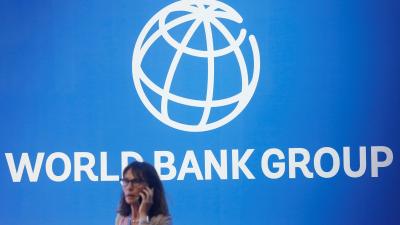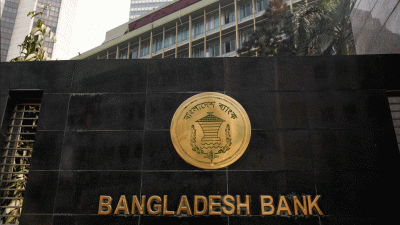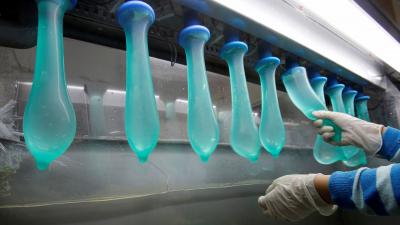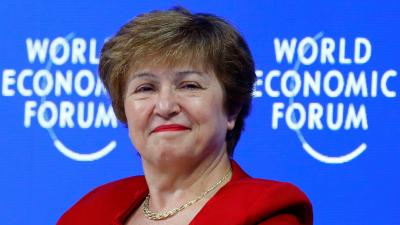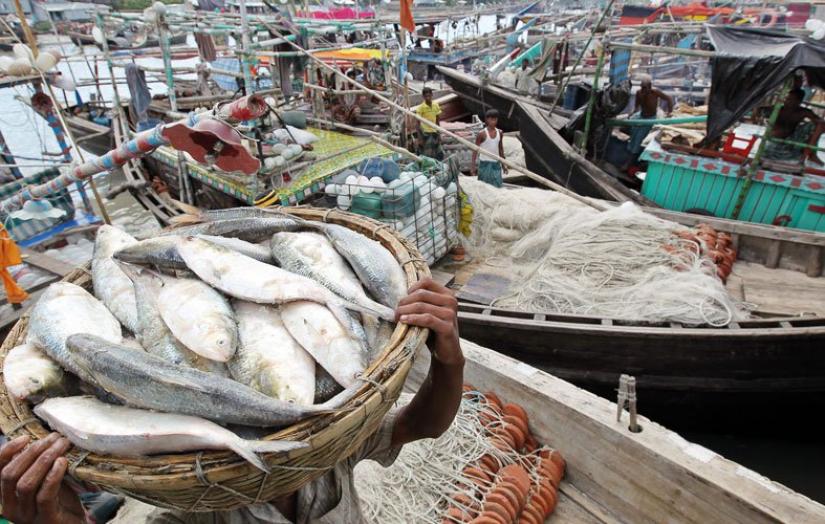 Bangladesh’s Ilish production has continued to grow due to the government bar on netting Jatka (Ilish fry) and strict implementation of rules regarding protection of the production zones.
Bangladesh’s Ilish production has continued to grow due to the government bar on netting Jatka (Ilish fry) and strict implementation of rules regarding protection of the production zones.
Besides, rehabilitation of fishermen and alternative job for them during the spawning period of Ilish has also played a big role in boosting Ilish production.
Meanwhile, except in Bangladesh, in 11 other countries where Ilish is found, its production is on the decline.
Ilish production increased by one hundred and sixty percent to 5.17 million MT tonnes in the last 20 years, according to the year book of fisheries statistics of Bangladesh Fisheries Research Institute (BFRI).
Fisheries Research Institute Director General Yahya Mahmud said: “The government is working to raise public awareness so that no one catches Ilish illegally during the spawning seasons. This is why the production of Ilish has increased.”
According to the BFRI report, in 2002-03 FY Ilish production was 1.99 lakh MT, 2.77 lakh MT in 2004-05 to 2006-07, 2.98 lakh MT in 2008-09, 3.25 lakh MT in 2010-11, 3.49 lakh MT in 2012-13, 3.75 lakh MT in 2014-15, 4.96 lakh MT in 2016-17, 5.17 lakh MT in 2018 and the current year up to March.
Ilish is now found in the rivers of 125 upazilas of the country, according to BFRI, while fisheries sector plays an important role in the economy and Ilish is one of sources of nutrition, employment and export earnings for the country.
According to the Ministry of Fisheries and Livestock, Ilish's contribution to the country's total fish production is about 12% and around 1% of the country’s GDP while fisheries sector contributes 3.57% of the country's total GDP and 25.30% of agricultural GDP.
The market value of Ilish produced in the country is about Tk20,000 crore and the government is trying to sustain and increase its growth performance.
According to the Bangladesh Bureau of Statistics (BBS), almost 31% of the country's population are directly involved in the fisheries sector, while 11% indirectly depend on this sector for their livelihood.
Bangladesh Fisheries Research Institute Senior Scientific Officer Ashraful Alam said: “We have been successful in preventing Jatka netting during the spawning periods from March to April and November to January, and also securing six safe zones of Ilish covering 7,000 square kilometers.”
According to Bangladesh Fisheries Research Institute (BFRI), Chadpur, Bhola, Barisal, Shariatpur, Potuakhali, Barguna are the safe haven of Hilsha. The highest 66% of Ilish come from Barisal division.
According to the report of the United Nations Food and Agriculture Organization (FAO) on July 9 last year, Bangladesh was fifth in world ranking on inland fish production two years ago. Now it is third. The country now only trails behind China and India, ranked first and second respectively. Not only Ilish, other species of fish are also witnessing growth in production.
Fisheries Research Institute Director General Yahya Mahmud said: “Fisheries Department is implementing a project named 'Eco Fish' in eight districts to protect fish and biodiversity of the coastal rivers. We are implementing the project in Barguna, Patuakhali, Bhola, Barisal, Pirojpur, Shariatpur, Chandpur and Laxmipur districts at a cost of Tk90 crore.”
“International fish research firm ‘World Fish’ is giving the financial and technical support,” he informed.
Global production scale
Fish experts have said Ilish production can be maximized in areas adjacent to the Bay of Bengal. For this, India and Myanmar have to stop netting mother Ilishs and Jatkas which will increase Ilish in these areas.
More than 70% of the world’s total production of Ilish is from Bangladesh, followed by India with 10%-15% and Myanmar with 8%-10%. The rest comes from other countries.
Ilish prices
With the production of Ilish on the rise over the years, its prices declined in domestic markets remarkably, much to the satisfaction of Ilish consumers. According to the estimate of Fisheries Research Institute, the price of a medium sized Ilish came down to Tk700-800, which was Tk1,000-1,200 even three years back. The prices of Ilish would come down further in the coming years, Director General of the Institute Yahya Mahmud said.
GI recognition
In 2017, Ilish was recognized by the World Intellectual Property Organization (WIPO) as the geographical indicator of Bangladesh.
Scientists of Bangladesh have achieved the feat of exposing the full life of this fish the following year. Meanwhile, researchers of Bangladesh Agricultural University of Mymensingh started research in this genome in 2015. These achievements play an important role in the preservation, production and quality of Ilish.
Training institutions
In March 22, State Minister for Fisheries and Livestock Ashraf Ali Khan Khasru inaugurated a training centre in Chandpur under the Bangladesh Fish Research Institute at a cost of Tk1.5 crore.
Businessmen, fishermen, stockists, fisheries representatives and others involved in the sector will get technology-based training under this institution. Around 500 people will be trained here annually.
Social security
Approximately five lakh fishermen are directly involved in the procurement of Ilish. About 25 lakh people are directly and indirectly involved in this sector.
The government has provided 7914.18 MT of VGF (Vulnerable Group Feeding) food assistance at a rate of 20 kg to 3,95,709 families in 2018-19.
 Business
Business
41475 hour(s) 50 minute(s) ago ;
Evening 10:45 ; Thursday ; Jul 10, 2025
Huge yields of Ilish widen economic horizon
Send
Mamun Abdullah
Published : 04:00, May 05, 2019 | Updated : 04:00, May 05, 2019
Published : 04:00, May 05, 2019 | Updated : 04:00, May 05, 2019
0 ...0 ...
/hb/
Topics: Top Stories
- KOICA donates medical supplies to BSMMU
- 5 more flights to take back British nationals to London
- Covid19: Rajarbagh, Mohammadpur worst affected
- Momen joins UN solidarity song over COVID-19 combat
- Covid-19: OIC to hold special meeting
- WFP begins food distribution in Cox’s Bazar
- WFP begins food distribution in Cox’s Bazar
- 290 return home to Australia
- Third charter flight for US citizens to return home
- Dhaka proposes to postpone D8 Summit
Unauthorized use of news, image, information, etc published by Bangla Tribune is punishable by copyright law. Appropriate legal steps will be taken by the management against any person or body that infringes those laws.
Bangla Tribune is one of the most revered online newspapers in Bangladesh, due to its reputation of neutral coverage and incisive analysis.
F R Tower, 8/C Panthapath, Shukrabad, Dhaka-1207 | Phone: 58151324; 58151326, Fax: 58151329 | Mob: 01730794527, 01730794528

